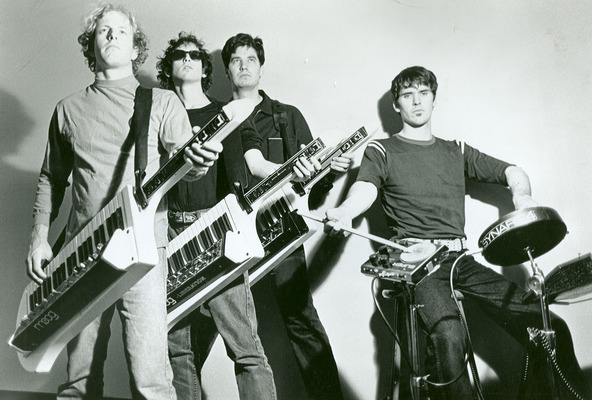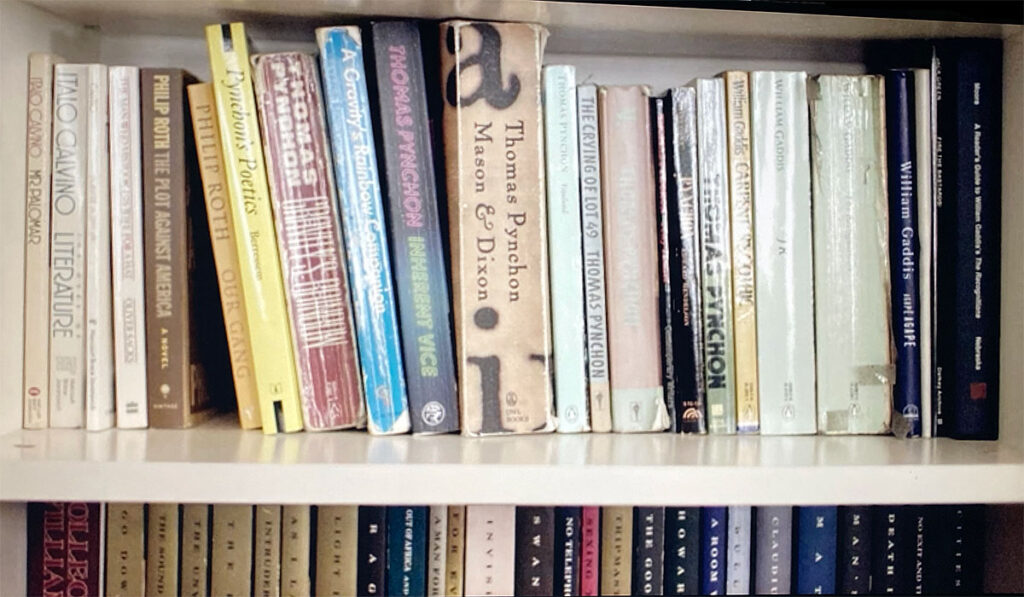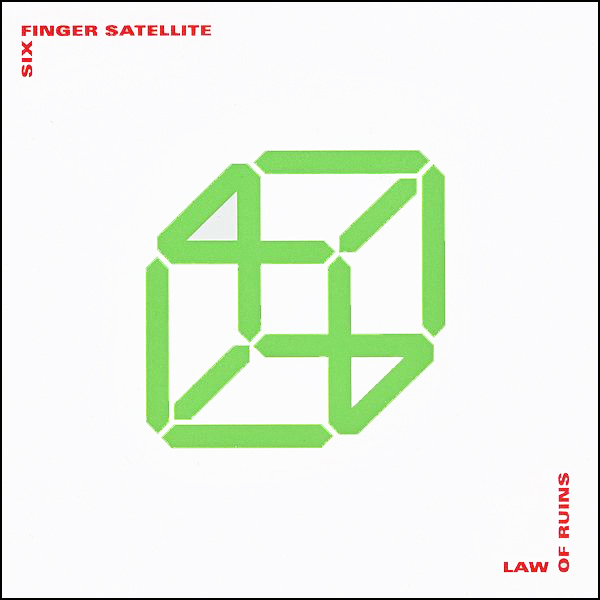Pynchon Music: Six Finger Satellite
Six Finger Satellite (1990–2001)
Six Finger Satellite is an electro-futurist band that delights in defying categories. Their debut album, The Pigeon Is the Most Popular Bird, sounds like it could have come from any number of decades. A forward-looking 1978? Sure, maybe. A post-punk 1987? Without a doubt. A post-grunge 1999? Sounds about right! Post-punk, post-new wave, post-grunge: As long as the style transforming into something else, it seems to fit. A genre-hungry blender, Six Finger Satellite devours disco, punk, new wave, grunge, art rock, space rock—even Krautrock—and spins out a glorious fusion of styles. To indulge in the “sounds like” game: Hawkwind’s Robert Calvert fronting Gang of Four? Early Devo embracing sci-fi nihilism? Bauhaus bingeing on Can bootlegs? Art-school jokesters high on Chrome cassettes? Whrrrrrr goes the blender!
Known more succinctly as 6FS, Six Finger Satellite was founded in Providence, Rhode Island in 1990 by Jeremiah Ryan, Peter Phillips, John MacLean, Chris Dixon, and Rick Pelletier. After luring in Sub Pop with a demo that promised alternative-rock greatness, they went on to record four albums of increasingly more electronic-oriented music. Along the way they lost two founding members, with Dixon replaced by Kurt Niemand, and Phillips leaving to play with Matthew Sweet and Yo La Tengo. Niemand died of a heroin overdose in 1995, and was replaced by bassist John Apt. In 1998, 6FS teamed up with New Jersey soundman James Murphy, who nudged the band further into progressive rock. The result was the magnificently unclassifiable Law of Ruins. (Is “muscular space-rock” a contradiction in terms?) Containing eleven songs of seamlessly tracked paranoia, Law of Ruins taps into the same millennial anxiety that fueled Radiohead’s OK Computer, but seems a little more on the side of the androids.
Six Finger Satellite broke up after Law of Ruins, but reforms every few years with a slightly different line-up. Meanwhile, James Murphy went on to electrify Brooklyn dancefloors with his Bowie-meets-Talking Heads project, LCD Soundsystem, and James MacLean became “The Juan MacLean,” an electronics composer and deejay signed to Murphy’s DFA label.
Pynchon Connection
While the entirety of Law of Ruins is laced with Pynchonian themes—rockets, the surveillance state, German puns—the seventh track is entitled “The White Visitation,” a clear allusion to Gravity’s Rainbow. Sadly, it’s the least compelling track on an otherwise brilliant album. Not exactly an instrumental, the lyrics are buried deep beneath a plodding electronic groove and shimmering bursts of synth. Aside from an occasional word that snarls through the distortion, it’s impossible to make out what’s being sung; but it could be about parapsychology? At least, that would be a theme consistent with the album! In any event, consider this Pynchon connection just the cherry on the top of a late-90s masterpiece: file Law of Ruins in the “Best Albums You’ve Never Heard” bin.
While it’s possible 6FS may have been influenced by Thomas Pynchon before they started working with James Murphy, Murphy has been quite vocal about his passion for the author. In the 2012 concert documentary, Shut Up and Play the Hits, the camera settles on Murphy’s bookshelf, revealing not just a robust collection of Calvino, Roth, Pynchon, Gaddis, Faulkner, and Mann, but reader’s guides and critical explications as well.
That same year the Irish Times ran a profile of Murphy that begins with Pynchon:
Music
2. Surveillance House (5:24)
3. Fall to Pieces (7:33)
4. Sea of Tranquility, Parts 1 & 2 (11:46)
5. Law of Ruins (3:33)
6. Lonely Grave (5:30)
7. New Kind of Rat (5:01)
8. The White Visitation (6:43)
9. Bad Aptitude (3:35)
10 Fur Immer Liebe (7:53)
11. Hertz So Good (4:00)
John MacLean—guitar, synthesizer.
James Apt—bass guitar, clarinet.
Jeremiah Ryan—vocals, Moog synthesizer
Richard Ivan Pelletier—drums, drum machine.
James Murphy—production, engineering, mixing.
Additional Information
Last Modified: 6 December 2021
Back to: Pynchon on Record
Main Pynchon Page: Spermatikos Logos
Contact: quail(at)shipwrecklibrary(dot)com




